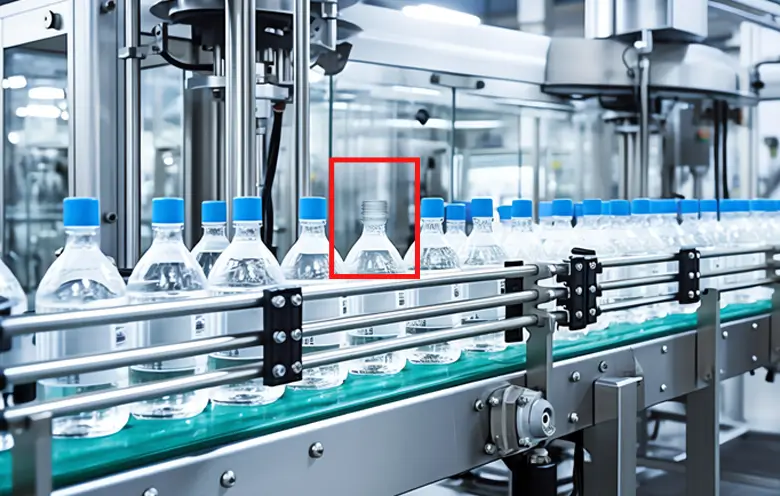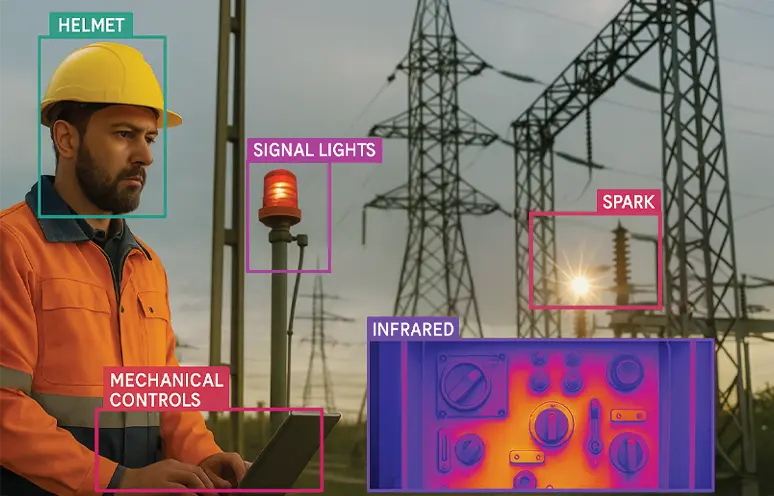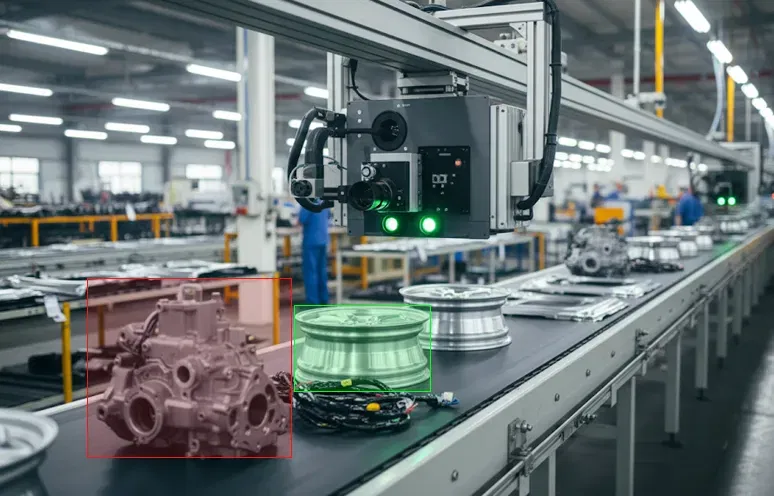How do you ensure every single item meets the highest quality standards, while keeping production lines running smoothly?
Is this one of the many questions that bother you? Being in the manufacturing industry, maintaining high-quality output while optimizing production efficiency is paramount. There are several questions that manufacturers look answers for:
- How can we identify and eliminate even the most subtle defects before they reach customers, preventing costly recalls and reputational damage?
- How can we optimize production processes to minimize defects and ensure worker safety during repetitive or hazardous visual inspection tasks?
US Industrial production rose 0.4 percent in March 2024 but declined at an annual rate of 1.8 percent in the first quarter. – Federal Reserve
Traditional human visual inspection methods, while valuable, can be prone to fatigue, inconsistency, and limitations in speed and accuracy. This is where artificial intelligence (AI) steps in, offering a revolutionary approach to visual inspection with a range of benefits.
Before diving into the blog about how AI-powered visual inspection works and its use cases, please refer to our previous blog where we discussed the benefits of AI visual inspection.
How AI visual inspection works
1. Data acquisition and preparation:
Image capture: High-quality images are collected from the production line, capturing various angles and lighting conditions to represent the range of products being inspected. This can involve cameras installed at specific inspection points or integrated into existing machinery.
Data labeling: These images are then meticulously labeled by image annotation experts. This crucial step involves identifying and marking the specific defects, anomalies, or desired features the AI system needs to learn to recognize.
2. Deep learning model training:
Model selection: Deep learning models, a type of artificial neural network loosely mimicking the human brain’s structure, are chosen based on the complexity of the inspection task. Common choices include convolutional neural networks (CNNs) excelling at image recognition.
Training the AI: The prepared data (labeled images) is fed into the chosen AI model. Through complex computer vision algorithms, the model progressively learns to identify the patterns and features that differentiate good products from defective ones. This training process involves fine-tuning various parameters to optimize the model’s accuracy.
3. Deployment and inspection:
Integration: The trained AI model is deployed on the factory floor. This can involve installing it on dedicated computers or integrating it directly with existing equipment like robotic arms or conveyor belts.
Real-time inspection: During production, new images are captured of the products as they move along the line. These images are fed into the AI model for analysis.
Defect detection and classification: The AI system, having learned from the training data, can now rapidly analyze these new images and identify any defects or anomalies present. It can even classify the defects based on type and severity.
4. Output and decision making:
Alerts and notifications: Depending on the identified defects, the AI system can trigger alerts or notifications to human operators or initiate automated actions. For example, it might flag defective products for removal or adjust manufacturing parameters to prevent similar issues.
Data collection and improvement: The AI system can also continuously collect data on the defects it encounters. This data is used to further refine the model over time, improving its accuracy in detecting new variations or emerging defect types.
Suggested: Image annotation: Benefits and uses
Use cases of AI-powered automated visual inspection
Industrial manufacturing
Flaw detection:
- Challenge: Manually detecting minute defects like scratches, cracks, or misalignments on high-volume production lines can be slow and prone to human error. This can lead to faulty products reaching customers and potential recalls.
- Solution: Visual defect detection systems trained on vast datasets of images can identify these defects with exceptional precision and speed, even on complex components.
- Benefits: Increased quality control, reduced defect rates, fewer recalls, and improved product reputation.
Component verification:
-
- Challenge: Ensuring all components are present, correctly placed, and properly soldered on intricate circuit boards like PCBs is a critical but tedious task. Manual inspection can be time-consuming and may lead to errors, impacting product functionality.
- Solution: AI can analyze images of PCBs to verify component presence, placement, and soldering quality.
- Benefits: Improved product functionality, reduced risk of malfunctions, faster production times, and cost savings.
Food and beverage
Object detection:
- Challenge: Guaranteeing food safety requires meticulous inspection for foreign objects like plastic or metal fragments during the production process. Missed contaminants can lead to health risks and product recalls.
- Solution: AI systems can analyze food images at high speeds, identifying and flagging potential contaminants before packaging.
- Benefits: Enhanced food safety, reduced risk of recalls, consumer confidence in product quality, and brand protection.
Quality control:
- Challenge: Maintaining consistent quality in fruits and vegetables can be difficult due to natural variations. Additionally, ensuring proper fill levels in containers is crucial for accurate labeling and consumer trust. Inconsistent quality can lead to customer dissatisfaction and wasted product.
- Solution: AI quality control identifies blemishes on produce, monitor fill levels in containers, and ensure consistent quality throughout production.
- Benefits: Reduced waste, improved product presentation, accurate labeling for consumer trust, and brand loyalty.
Benefits of leveraging AI-driven visual inspection in manufacturing
Precision and defect detection
Significantly reduced defect rates, fewer recalls, and a higher overall quality of manufactured goods. This translates to enhanced brand reputation and customer satisfaction.
Speed and scalability
Increased production throughput, faster time-to-market for new products, and the ability to seamlessly adapt to growing demand.
Continuous improvement
Manufacturers gain insights into root causes of quality issues that allow them to take preventive measures, optimize production processes, and minimize future defects. This data-driven approach fosters continuous improvement within the manufacturing ecosystem, leading to long-term cost savings.
Enhanced worker safety
Improved worker safety and reduced worker fatigue. Additionally, the improved efficiency and reduced defect rates translate to significant cost savings for manufacturers. These savings can be reinvested in further innovation and growth.
Advanced asset management
Proactive maintenance practices minimize downtime, extend equipment life, and optimize production scheduling. This translates to significant cost savings and improved overall equipment effectiveness (OEE).
Leverage the transformative power of AI visual inspection
Manufacturers that implement AI-powered visual inspection achieve a paradigm shift in quality control, efficiency and cost reduction. As AI technology continues to evolve at an unprecedented pace, the possibilities for intelligent manufacturing are limitless. Embrace AI visual inspection today and see your business soar towards a smarter, more successful future. Contact our AI consultants to know more about how this technology can revolutionize your manufacturing operations.


